Mastering Eyeliner: Techniques and Product Guide
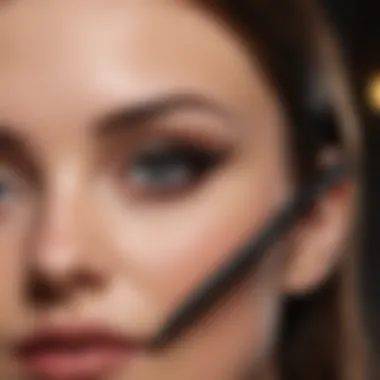
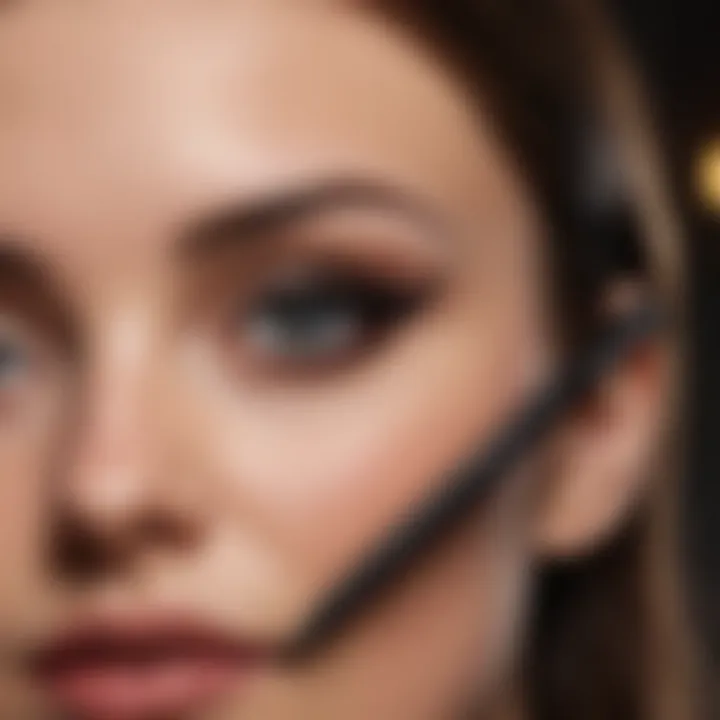
Intro
Eyeliner has long been a staple in makeup routines across various cultures. It can define and accentuate the eyes, transforming a basic look into something striking. However, successfully applying eyeliner involves more than merely drawing a line. This comprehensive guide endeavors to unpack the nuances of eyeliner application, catering to both beginners and seasoned makeup enthusiasts.
Understanding the broad spectrum of eyeliner products available is crucial. From liquid liners to gel formulas, each serves a unique purpose. Additionally, grasping the different techniques and styles can help individuals choose what suits their eye shape and personal aesthetic.
In this article, we will delve into the essential tools needed for application, explore various techniques, discuss styles suitable for diverse occasions, and provide troubleshooting advice for common challenges. With this guide, readers can confidently elevate their eyeliner skills to achieve their desired looks.
Tips and How-Tos
Applying eyeliner can sometimes feel overwhelming. Ensuring a smooth application requires a few preparatory steps. Firstly, consider the following skincare routines tailored to different skin types:
- Oily Skin: A mattifying primer can help control excess shine. This creates a smooth canvas for eyeliner.
- Dry Skin: A hydrating primer is ideal. Ensure that the eyelids are moisturized but not greasy.
- Combination Skin: Use a balancing formula that targets oily areas without neglecting dry patches.
Once the skin is prepared, selecting the right tools is vital. Different brushes and applicators can drastically influence the outcome.
Essential Tools for Eyeliner Application
- Pencil Eyeliner: Easy to use and ideal for beginners. Recommended for a softer look.
- Liquid Eyeliner: Offers precision but requires a steady hand. Often used for bold, dramatic effects.
- Gel Eyeliner: Smooth and versatile. Provides the best of both worlds with ease of use and long-lasting power.
When applying eyeliner, practicing various techniques will broaden one’s skillset. Here are some common methods:
- Tightlining: This technique involves lining the waterline to create the illusion of fuller lashes. It’s subtle yet effective.
- Winged Eyeliner: A classic look that extends beyond the outer corner, giving an uplifting effect to the eyes. Mastery requires practice.
- Smudged or Smoky Eyeliner: For a softer appearance, applying eyeliner and immediately blending it can create a beautifully diffused look.
"The beauty of eyeliner lies in its versatility. The same product can yield various looks depending on the application method."
Sustainable Practices
With the growing concern about environmental impact, many makeup brands are moving towards sustainable practices. Choosing eco-friendly products can reduce one’s carbon footprint while still allowing for personal expression through makeup. Consider brands that prioritize natural ingredients and environmentally conscious packaging.
In addition, be mindful of product disposal. Opt for brands that offer recycling programs or refill options to minimize waste.
Celebrating Diversity in Beauty
Eyeliner can be adapted to various cultural expressions and personal identities. Inclusivity in beauty brands allows for a broader representation of styles and techniques. This is empowering, as each culture may have unique traditions related to eye makeup.
When exploring eyeliner, keep in mind the influences from different parts of the world. Historically significant styles can inspire contemporary looks, encouraging a diverse approach in personal makeup routines.
Ending
Through understanding the tools, techniques, and cultural contexts of eyeliner application, individuals can cultivate a more profound appreciation for this makeup staple. Mastering eyeliner application takes time, experimentation, and practice, allowing one to express their individuality and artistic flair.
Understanding Eyeliner: Types and Formulations
Understanding the various types and formulations of eyeliner is essential for both novice and seasoned makeup users. Eyeliner defines the eyes, enhances their shape, and complements other makeup elements. Choosing the right eyeliner can significantly affect the overall look and feel of makeup. The different formulations cater to various preferences, styles, and occasions, making it crucial to comprehend their unique characteristics.
The Role of Eyeliner in Makeup
Eyeliner serves a critical function in makeup application. It is not merely a cosmetic product but a tool that accents the eyes. Using eyeliner can provide depth and definition, shaping the eyes to create different looks—from subtle to dramatic. Eyeliner can transform a basic makeup routine into a work of art, allowing for individual expression and choice.
Additionally, eyeliner contributes to the appearance of fuller lashes. When applied correctly, it can enhance the eyes' natural beauty, drawing attention to their unique shape and color. For those seeking to elevate their makeup skills, understanding how eyeliner fits into the broader makeup scheme is fundamental.
Different Types of Eyeliner
Pencil Eyeliner
Pencil eyeliner is one of the most traditional forms of eyeliner. It is known for its ease of use and versatility. The key characteristic of pencil eyeliner is its creamy texture, which allows for smooth application. This type is beneficial for makeup users seeking quick and straightforward application methods.
One unique feature of pencil eyeliners is their ability to create both fine and bold lines, depending on the pressure applied. They come in various formulations, including waterproof options, which make them suitable for different situations. However, a disadvantage is that they may require sharpening, which can lead to wastage of product.
Liquid Eyeliner
Liquid eyeliner is favored for its intense color payoff and precision. The defining characteristic is its fluid consistency, which results in a long-lasting finish. Liquid eyeliners are particularly popular for creating sharp, defined lines, essential for intricate styles such as winged eyeliner.
The unique feature of liquid eyeliner is its applicator, usually a brush or felt-tip, which enables controlled application. However, they can be challenging to apply for beginners and may take time to master. Liquid eyeliner comes in various finishes, including matte and shiny, allowing for further customization.
Gel Eyeliner
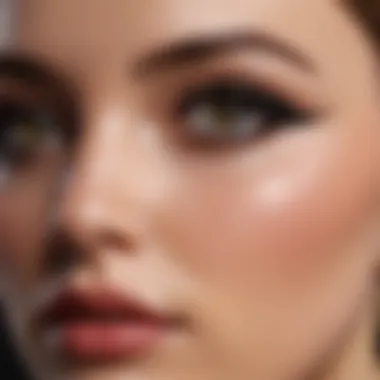
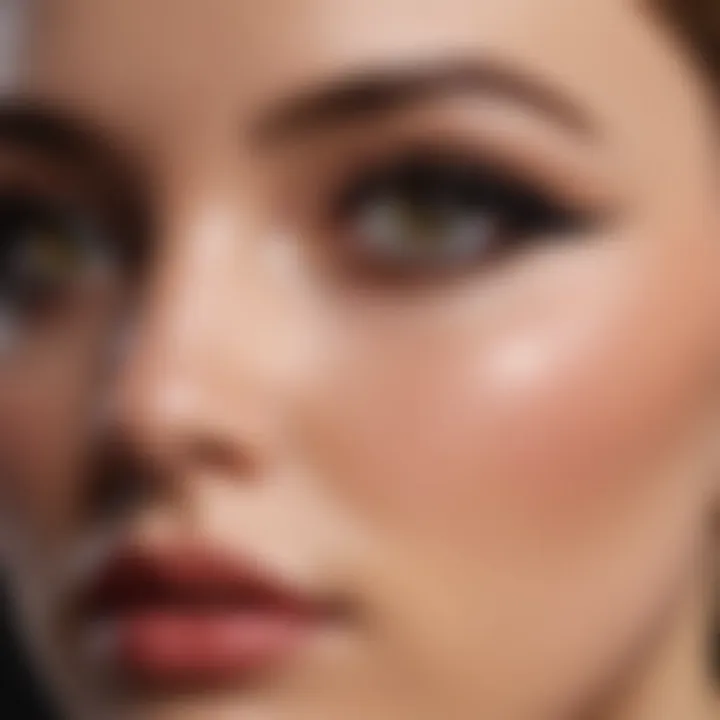
Gel eyeliner combines the ease of pencil eyeliner with the long-lasting formula of liquid products. The creamy formulation allows for a smooth application and is versatile for various styles. It is particularly known for its staying power, often outperforming pencil eyeliners in terms of durability.
The unique feature of gel eyeliners is their ability to be applied with a brush, giving users control over the line's thickness and shape. While gel eyeliners are easier to work with compared to liquid eyeliners, they may dry out if not stored properly, limiting their lifespan.
Cream Eyeliner
Cream eyeliner offers a softer finish, making it an excellent option for a more natural look. It shares characteristics with gel eyeliner but maintains a more fluid consistency. Users appreciate cream eyeliners for their blendability, allowing for seamless transitions between colors and styles.
One notable advantage of cream eyeliners is their ability to create a smoky effect, ideal for those who prefer a less defined look. However, they may not have the long-lasting capabilities of liquid or gel options and can smudge if not set appropriately.
Felt-tip Eyeliner
Felt-tip eyeliners are akin to markers and are known for their convenience. The tip allows for precise application, making them an ideal choice for quick touch-ups. The key characteristic of felt-tip eyeliners is their ease of use, suitable for beginners and individuals on the go.
The unique feature here is the precision applicator, which can create thin lines or more substantial strokes. However, they may not offer the versatility of gel or liquid products in terms of finish and line options. Some users also note that the ink can dry out quickly compared to other types.
Choosing the Right Eyeliner for Your Needs
Selecting the appropriate eyeliner involves considering several factors. Users should assess their skill level, desired look, and specific occasions. Understanding the advantages and disadvantages of each type will inform better choices.
Consideration of the eye type is crucial too. For example, those with sensitive skin may prefer pencil or gel formulations. In contrast, users aiming for an all-day wear might find liquid eyeliners more suitable. By aligning personal needs with product characteristics, the best choice can be made, ensuring that the makeup application process is optimally effective.
Essential Tools for Eyeliner Application
Understanding the role of tools in eyeliner application is essential for achieving precise and flattering results. The right tools not only facilitate smoother application but also enhance overall control. This section will delve into the various essential tools, focusing on brushes, primers, and removers. Using appropriate tools can significantly impact the quality of the eyeliner look you achieve.
Brushes and Applicators
Angled Brushes
Angled brushes are designed with a slanted edge, making them particularly suited for eyeliner application. Their main characteristic is their shape, which allows for greater precision when creating various eyeliner styles, especially winged looks. This feature makes angled brushes a popular choice in many makeup kits.
A unique advantage of angled brushes is their ability to provide control over the thickness of the line. You can easily achieve a thicker line by using the side of the brush while maintaining thin lines with the tip. However, they may require some practice to master the technique fully, as improper use can lead to uneven application.
Fine-tip Brushes
Fine-tip brushes are another essential tool for precise eyeliner application. These brushes are noted for their narrow, pointed bristles. This design allows for intricate detailing and creates very thin lines, making them a beneficial option for those aiming for a precise look or intricate designs.
The unique feature of fine-tip brushes lies in their ability to create detailed work, such as inner corner highlights or intricate designs. When comparing this brush to others, its design is particularly advantageous when working with liquid or gel formulations. However, fine-tip brushes can be less forgiving for beginners, as they require a steady hand to achieve the desired results without smearing or misapplication.
Eye Primer and Setting Sprays
Application of an eye primer is an important step in ensuring that your eyeliner adheres properly and lasts throughout the day. Primers create a smooth base on the eyelids, preventing the eyeliner from smudging or transferring. Setting sprays are also crucial as they help to lock the eyeliner in place after application. Without them, the eyeliner may fade or shift during wear, lessening the overall effectiveness of your look.
Makeup Remover and Correction Tools
Makeup removers and correction tools are vital for any eyeliner application. A suitable makeup remover can help eliminate any mistakes made during application without damaging the skin. This allows for corrections without the entire makeup look being compromised. Correction tools like cotton buds can also be useful for fine-tuning the lines.
Basic Eyeliner Application Techniques
Basic eyeliner application techniques form the foundation of mastering this skill. Understanding these techniques is essential for both beginners and those wanting to refine their approach. Proper application can dramatically enhance the overall look, giving depth and definition to the eyes. Furthermore, mastering the basics helps in building confidence, enabling individuals to experiment with advanced styles later on.
Preparation: Cleaning and Priming Your Eyelids
Before applying eyeliner, it's crucial to begin with clean eyelids. Use a gentle eye makeup remover to eliminate any existing makeup or dirt. Following the cleansing step, applying an eye primer is highly recommended. This product creates a smooth base for the eyeliner, ensuring it adheres better and lasts longer. Primers also help in controlling oiliness of the eyelids, which can cause the eyeliner to smudge or fade.
- Clean the eyelid: Ensure all makeup residue is removed.
- Apply eye primer: Use a small amount and spread evenly over the eyelid, up to the brow bone.
- Let it dry: Wait a moment for the primer to set before moving on.
Creating the Perfect Line: Step-by-Step Guide
Creating a precise line is a crucial skill for effective eyeliner application. Here’s a straightforward step-by-step guide:
- Choose your eyeliner type: Decide between pencil, liquid, or gel depending on the desired look.
- Start from the inner corner: Begin lining from the inner corner of your eye. Using short, small strokes generally offers better control.
- Follow the lash line: Keep the line close to the lashes. If you aim for a thicker line, gradually build it up rather than applying too much product at once.
- Create a slight flick: For styles such as winged eyeliner, extend the outer edge slightly. A small tape can be used to create an angled guideline.
- Connect the lines: If you're creating a wing, draw it back to connect with the original line for a cohesive look.
- Check for symmetry: Step back to see if both eyes match before finalizing the look.
Adjusting Pressure and Angle
Adjusting pressure and angle when applying eyeliner is vital for achieving different effects. A gentle hand can create a soft line, ideal for natural looks, while applying more pressure can produce bold and defined lines. Additionally, the angle of your applicator affects the type of line you create.
- For a standard line: Hold the applicator parallel to your eyes, applying even pressure.
- For a wing: Tilt the applicator slightly upwards at the end.
- For a softer look: Apply less pressure and use feathery strokes.
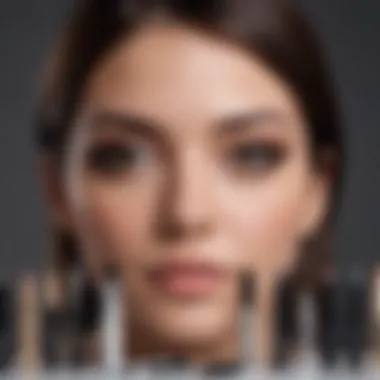
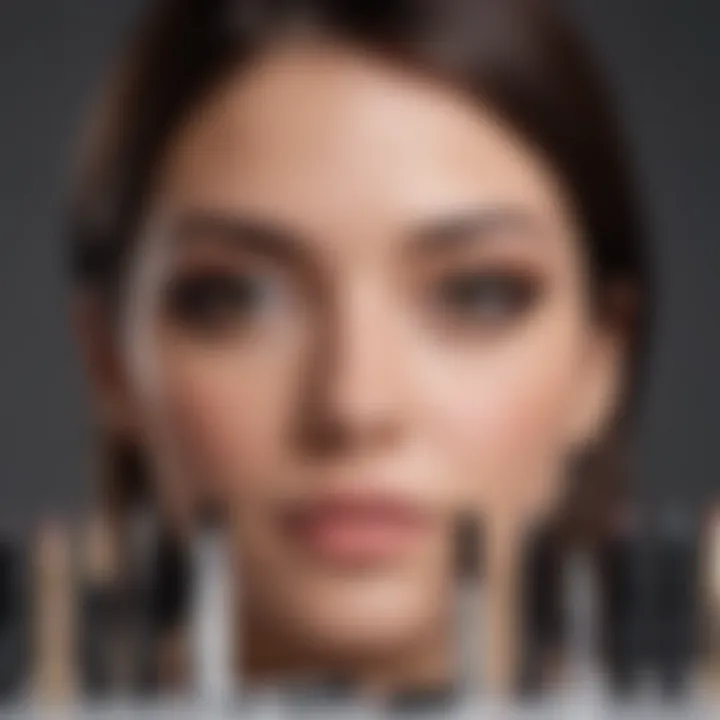
In summary, mastering these basic techniques lays the groundwork for more complicated eyeliner styles. This knowledge is essential for achieving a polished and professional look with eyeliner.
Advanced Techniques for Eyeliner Styles
Understanding and mastering advanced techniques in eyeliner application can significantly enhance your makeup skills. These techniques offer a wide range of styles, from classic to modern, allowing for personal expression through makeup. Incorporating elements like winged, graphic, or smudged eyeliner can transform the simplest look into something more striking. Not only do these styles require precision, but they also allow individuals to experiment with shapes and colors, ultimately broadening their makeup repertoire.
Winged Eyeliner: How to Achieve the Look
Winged eyeliner has become an iconic makeup style. It adds elegance and a touch of drama to the eyes. To achieve the perfect winged eyeliner, start by drawing a small line from the outer corner of your eye, extending outward at an angle that complements the shape of your eye. It's essential to find an angle that works for you, whether subtle or dramatic. Building the wing gradually can help in correcting mistakes.
- Begin with a thin line along your upper lash line.
- Extend the line towards the tail, maintaining a steady hand.
- Fill in the wing, connecting it back toward the lash line.
- Use a cotton bud dipped in makeup remover for any corrections.
Using liquid or gel eyeliner works best for this technique, providing a clean and crisp finish. For variety, consider adjusting the width and length of the wing based on the occasion.
Graphic Eyeliner: Tips for Bold Designs
Graphic eyeliner moves beyond traditional looks, allowing for bold designs and impressive statement-making styles. This technique embraces artistic freedom. Start by drawing shapes around the eye using colored eyeliners or felt-tip eyeliners. Here are some tips to achieve a graphic eyeliner look:
- Use a fine-tipped applicator for precision.
- Experiment with geometric shapes, like triangles or lines, to frame the eyes.
- Combine different colors to create contrast.
- Don’t be afraid to extend lines beyond your eye shape for a striking effect.
Graphic eyeliner can be a contemporary technique that challenges norms, making it perfect for creative expressions during events or photoshoots.
Smudged Eyeliner: A Soft and Smoky Effect
Smudged eyeliner is all about creating a soft, smoky effect around the eyes. This style is often less structured than winged or graphic eyeliner, lending itself to a more relaxed appearance. To achieve this look:
- Apply pencil eyeliner along the upper and lower lash lines.
- Use a brush or your finger to smudge the liner lightly.
- The key is to blend the line until it's soft and diffused, which creates a smoky effect.
- Layering with eyeshadow can add depth and enhance the look.
This technique works well for casual outings or when a less polished finish is desired. It complements a variety of eye shapes and offers a sultry appeal that can be adjusted in intensity.
Remember to always set your eyeliner with translucent powder or setting spray to maintain the look throughout the day.
Mastering these advanced techniques helps in obtaining a versatile and dynamic makeup look. Embracing various styles allows for personal expression and creativity, catering to individual style preferences and occasions.
Troubleshooting Common Eyeliner Issues
Using eyeliner can elevate your makeup look, but it is not without challenges. This section focuses on troubleshooting common issues that arise during eyeliner application. Addressing these problems is essential for achieving a polished appearance. Understanding the causes and solutions behind eyeliner mishaps can save time and frustration, ensuring a better makeup experience.
Uneven Lines: Causes and Solutions
Uneven lines can disrupt the entire eyeliner look. There are several reasons this may happen.
- Steady Hand: Lack of control while applying can result in stuttering lines. Practicing with a steady hand is crucial.
- Product Quality: Some eyeliners have inconsistent formulas or pigments that can cause uneven application. Invest in well-reviewed brands.
- Application Technique: Not using the right technique can lead to imperfections. Explore different methods to find what works best for you.
To fix uneven lines:
- Layering: If one side is thinner, try applying a bit more product to even it out.
- Correction Pen: Use a makeup remover pen to fix mistakes. This is an effective way to achieve symmetry.
Remember to practice regularly. As you become comfortable, achieving smooth lines will improve.
Eyeliner Smudging Throughout the Day
Smudging is a common issue faced by many makeup users. This problem often arises due to various factors.
- Skin Type: Oily skin can contribute to smudging, as excess oil tends to break down makeup.
- Humidity and Sweat: Environmental factors play a significant role. Hot weather can cause eyeliner to slide off.
- Quality of Product: Not all eyeliners are created equal. Some formulas are less resistant to smudging.
To prevent smudging:
- Setting Powder: Use a translucent powder to set your eyeliner. This can help absorb excess oil.
- Long-lasting Formulas: Olive for long-wear or waterproof products. They create a harder barrier against smudging.
- Limit Touching: Avoid touching your eyes throughout the day. This practice can cause product transfer.
By being mindful of these elements, you can achieve longer-lasting eyeliner.
Lifting or Fading Color in Eyeliner
Lifting or fading eyeliner color can alter your intended look. This can make your makeup appear unfinished.
- Oxidation: Some products may change color due to exposure to air. This can cause lifting.
- Moisture: Humid conditions or watery eyes can wash away color. You might notice the liner fading faster than expected.
- Wrong Base: Applying eyeliner on bare skin can lead to fading. A primer creates a more secure base for the product.
To maintain color:
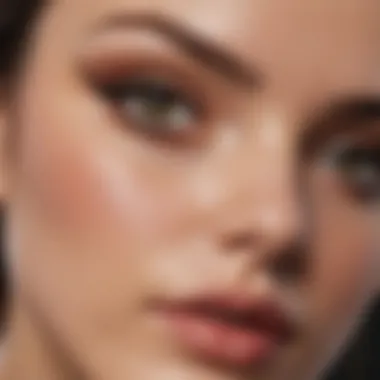
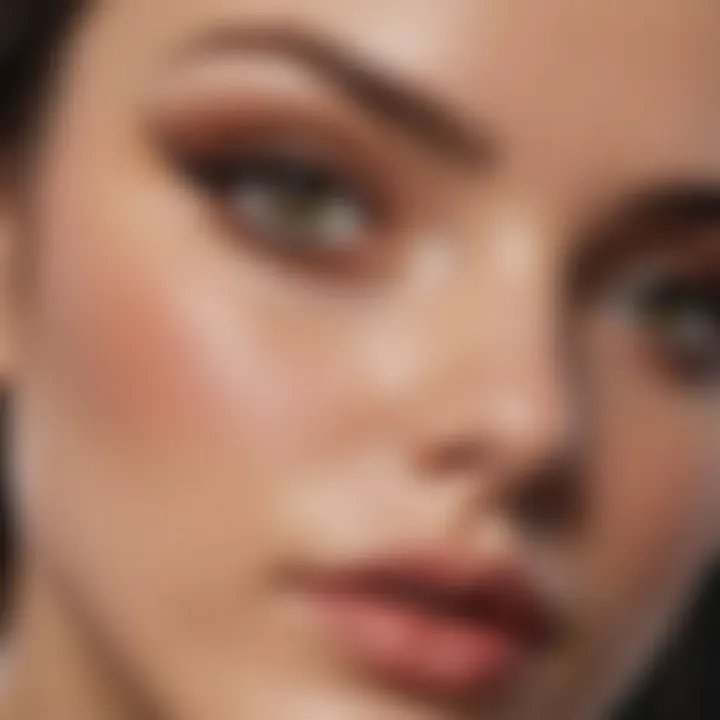
- Use a Primer: An eye primer helps to grip the eyeliner. This allows for better longevity.
- Layering Techniques: Applying multiple layers can enhance the richness of the color.
- Regular Touch-ups: Carry your eyeliner for quick touch-ups during the day. This can keep your look fresh.
In summary, overcoming issues with eyeliner application can make a significant difference in your overall makeup experience. Understanding the reasons behind common problems and their solutions leads to greater confidence in your skills.
Eyewear Considerations for Eyeliner Application
When it comes to applying eyeliner, the presence of eyewear can pose unique challenges and considerations. For individuals who wear glasses or contact lenses, understanding how to adapt eyeliner application is crucial. This section explores specific elements and benefits related to these two scenarios, ultimately enhancing the overall makeup experience.
Applying Eyeliner with Contact Lenses
Using contact lenses requires extra care when applying eyeliner to avoid irritation. Here are some practical steps to consider:
- Choose the Right Formula: Opt for water-resistant or long-wearing eyeliners. These types are less likely to smudge or run, which is important when wearing lenses that may cause tearing.
- Application Technique: Apply eyeliner before inserting contact lenses. This helps to avoid any product getting on the lens itself, which can cause discomfort. Start with a thin line along the lash line.
- Checking for Irritation: Always ensure that the eyeliner does not cause irritation. If redness or discomfort occurs, consider using hypoallergenic products.
"When you wear contact lenses, your eyes are more sensitive. Prioritize gentle and suitable products to minimize any issues."
By following these steps, contact lens wearers can maintain comfortable wear while also achieving the desired eyeliner look.
Eyeliner Options for Glasses Wearers
For those who wear glasses, the choice of eyeliner can significantly affect the overall makeup look. Here are some considerations for selecting the right products:
- Use Bold Lines: Glasses can often overshadow subtle eye makeup. Thicker and darker eyeliner can make the eyes pop, even behind frames.
- Focus on the Inner Eye: Highlighting the inner corners with a lighter eyeliner can create an illusion of brightness. This contrast works well with the frames, enhancing the overall appearance.
- Experiment with Colors: While black is classic, consider colored eyeliners for a trendy look. Rich blues and deep greens can add a refreshing twist, especially when paired with neutral eye shadows.
Maintenance and Aftercare for Eyeliner
Proper maintenance and aftercare of eyeliner products and application tools ensure optimal performance and hygiene. This section highlights the significance of maintaining these essential components of your makeup routine, ultimately leading to better application results and healthier skin. Understanding how to care for your eyeliner and tools extends their lifespan and protects your eyes from possible irritants.
Cleaning Your Tools and Brushes
Keeping your brushes and applicators clean is paramount. Dirty tools can harbor bacteria, leading to skin issues such as irritation or infection. Each time you use your brush or applicator, residue builds up. To avoid this, wash your brushes regularly with a gentle soap or brush cleanser. Here is a basic routine for cleaning tools:
- Frequency: Clean brushes used for eyeliner at least once a week.
- Method: Wet the bristles, apply a small amount of cleanser, and gently swirl in your palm. Rinse thoroughly until the water runs clear.
- Drying: Reshape the bristles and lay them flat on a clean towel to dry. Avoid standing them upright, as this may cause water to seep into the ferrule.
Adopting this routine will keep your tools in excellent condition and ready for perfect application.
Proper Storage of Eyeliner Products
Storage plays a role in the effectiveness of your eyeliner products. Proper storage keeps the eyeliner at the right consistency and prevents drying out or contamination. Consider the following tips when storing your eyeliners:
- Keep Cap On: Ensure the cap is securely placed after each use to avoid exposure to air.
- Cool, Dark Place: Store eyeliners in a cool, dark area, away from direct sunlight, which can degrade the product over time.
- Upright Position: When possible, keep pencil eyeliners positioned upright. This helps to maintain the integrity of the product and reduce breakage.
Maintaining thoughtful storage habits will help prolong the life and performance of your eyeliners.
Recognizing Expiration Dates
Eyeliners, like other cosmetic products, have a shelf life. Using expired products can cause irritation or allergic reactions. Here’s how to recognize the expiration dates and ensure product safety:
- Check Packaging: Most products have a symbol indicating the duration, often expressed as a number followed by an M, indicating months, e.g., 12M means 12 months after opening.
- Physical Changes: Look for changes in texture, smell, or color. If any of these occur, discard the product immediately.
- Safety First: For professional-grade eyeliners, always adhere to the manufacturer’s guidelines regarding the expiration of the product.
Understanding and monitoring the expiration dates is key to ensuring safety during application.
Regular maintenance and care of your eyeliner tools and products are crucial to achieving consistent and effective makeup results.
Finale: Mastering the Art of Eyeliner Application
Mastering eyeliner application is a crucial skill in the makeup repertoire of many individuals. The significance lies not just in achieving a desired aesthetic but also in enhancing one's ability to express personal style. This article provides a comprehensive understanding of various techniques, tools, and products, which empowers users to explore their creativity with eyeliner.
A well-applied eyeliner can define the eyes, elevate makeup looks, and boost confidence. With the practice and experimentation highlighted throughout this guide, users can refine their skills and discover what styles suit them best.
When one considers the nuances discussed, it is apparent that every element of eyeliner application holds value. From choosing the right type to troubleshooting common issues, each facet contributes to the overall success of the look. Here are a few key benefits of mastering eyeliner application:
- Versatility in Style: Understanding different techniques allows for variation, from subtle lines to bold, graphic looks.
- Confidence Building: The ability to apply eyeliner effectively enhances self-esteem and promotes a sense of competence in makeup application.
- Personal Expression: Eyeliner serves as a medium for self-expression, allowing wearers to convey their mood and style.
"Practice is essential; it refines techniques and opens up new possibilities in design."
Recognizing this complexity can lead to a more fulfilling makeup experience. Whether it's a novice just starting or a seasoned makeup user aiming to experiment with advanced techniques, mastering the art of eyeliner application requires patience, dedication, and creativity.
The Role of Practice and Experimentation
Practice and experimentation are fundamental in refining one’s skills with eyeliner. Just as with any artistic endeavor, one’s capability improves over time through repeated actions. Experimenting with different products, techniques, and styles allows for a more personalized approach to eyeliner application. This exploration can help shape one’s unique aesthetic, making it vital for individuals to step outside their comfort zone.
Embracing mistakes, such as uneven lines or smudges, serves as a learning opportunity. Each application can unveil new insights into angles, pressures, and product interactions. In addition, finding the right tools and products often comes from trial and error.
In summary, practice fosters improvement, and experimentation ignites creativity. They are the dual engines that drive mastery in eyeliner application, making the journey both educational and fulfilling.







